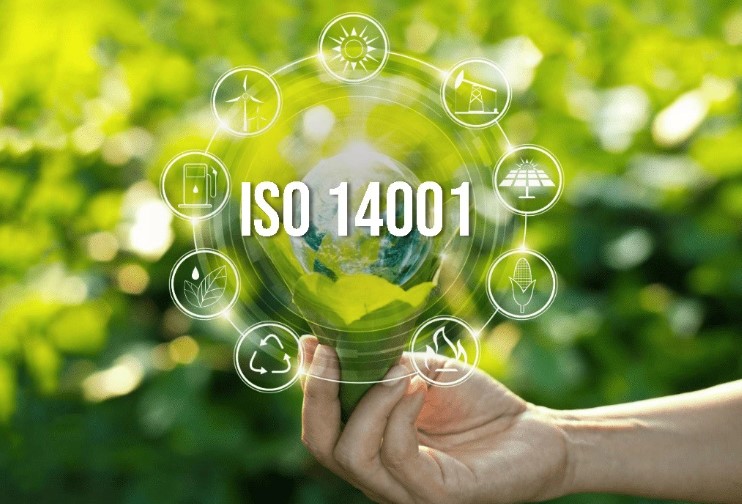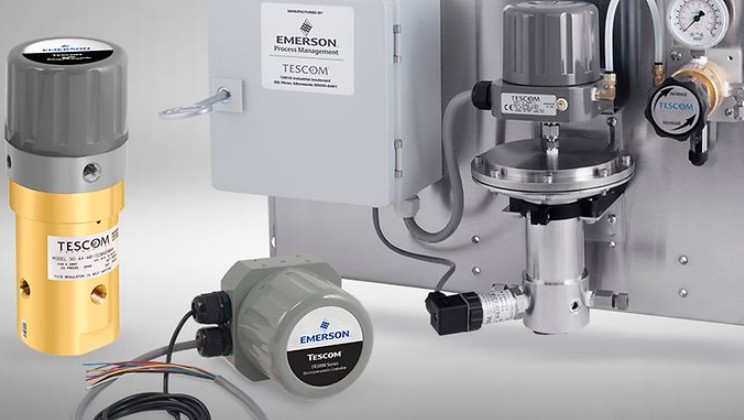Ultimate Guide to ISO 14001 Certification

Introduction
ISO 14001 Certification is a globally recognized standard for environmental management systems (EMS). In today’s world, where environmental sustainability is increasingly prioritized, having a structured approach to managing environmental impact is essential. ISO 14001 provides a framework for organizations to improve their environmental performance through more efficient use of resources and reduction of waste. This certification is not only about adhering to regulations but also about demonstrating a commitment to environmental stewardship, which can significantly enhance a company’s reputation.
Achieving ISO 14001 Certification brings numerous benefits. It helps organizations comply with legal requirements, reduce costs through improved efficiency, and gain a competitive edge in the market. Moreover, it signals to customers, stakeholders, and the broader community that the organization is dedicated to sustainable practices. This guide will delve into what ISO 14001 Certification entails, its key components, benefits, the certification process, and tips for successful implementation. By the end, you will have a comprehensive understanding of how ISO 14001 can transform your organization’s approach to environmental management.
What is ISO 14001 Certification?
ISO 14001 is part of the ISO 14000 family of standards designed for environmental management. It sets out the criteria for an environmental management system (EMS) and can be certified to. This standard provides a framework that a company or organization can follow to set up an effective EMS. ISO 14001 is suitable for organizations of all types and sizes, be it private, not-for-profit, or governmental.
The primary aim of ISO 14001 is to help organizations improve their environmental performance through more efficient use of resources and reduction of waste. By adopting ISO 14001, organizations commit to a process of continual improvement. The standard emphasizes the importance of an integrated approach to managing environmental responsibilities.
The origins of ISO 14001 trace back to the early 1990s, when the International Organization for Standardization (ISO) began developing the standard in response to growing concerns about environmental issues. Over the years, ISO 14001 has evolved to address emerging environmental challenges and to ensure it remains relevant in the context of modern environmental management practices.
ISO 14001 certification involves an external audit by a certification body, which assesses whether the organization’s EMS conforms to the requirements of the standard. Once certified, organizations must undergo regular audits to maintain their certification, demonstrating a commitment to continual improvement and compliance with environmental regulations.
Overall, ISO 14001 Certification provides assurance to company management, employees, and external stakeholders that environmental impact is being measured and improved systematically.
Key Components of ISO 14001
ISO 14001 Certification is structured around several key components that collectively form an effective environmental management system (EMS). These components ensure that organizations systematically address their environmental responsibilities and continuously improve their environmental performance. Here are the main components:
1. Environmental Policy
An environmental policy is a formal declaration of an organization’s commitment to environmental management. It sets the foundation for the entire EMS by outlining the organization’s intentions and principles in relation to its environmental performance. This policy must be communicated to all employees and made available to the public.
2. Planning
Planning involves identifying the environmental aspects and impacts of the organization’s activities, products, and services. It includes:
- Environmental Aspects Identification: Determining the elements of an organization’s activities that can interact with the environment.
- Legal and Other Requirements: Identifying applicable legal requirements and other environmental obligations.
- Objectives and Targets: Setting measurable environmental objectives and targets that align with the environmental policy and regulatory requirements.
- Environmental Management Programs: Developing plans to achieve these objectives and targets.
3. Implementation and Operation
This component focuses on establishing the necessary processes and controls to achieve the environmental policy, objectives, and targets. It includes:
- Resources, Roles, and Responsibilities: Assigning resources and defining roles and responsibilities for environmental management.
- Competence, Training, and Awareness: Ensuring employees are trained and aware of their environmental responsibilities.
- Communication: Establishing internal and external communication processes regarding environmental issues.
- Documentation: Maintaining documentation to support the EMS.
- Operational Control: Implementing procedures to manage significant environmental aspects.
- Emergency Preparedness and Response: Preparing for and responding to potential environmental emergencies.
4. Checking and Corrective Action
This component involves monitoring and measuring the performance of the EMS to ensure it is functioning as intended. It includes:
- Monitoring and Measurement: Tracking key environmental indicators and performance metrics.
- Evaluation of Compliance: Regularly assessing compliance with legal and other requirements.
- Nonconformity, Corrective Action, and Preventive Action: Identifying and addressing nonconformities, and implementing corrective and preventive measures.
- Internal Audits: Conducting periodic internal audits to evaluate the effectiveness of the EMS.
5. Management Review
Top management must review the EMS at planned intervals to ensure its continuing suitability, adequacy, and effectiveness. The management review process includes:
- Reviewing EMS Performance: Assessing the results of audits, compliance evaluations, and environmental performance data.
- Addressing Issues: Identifying areas for improvement and addressing any issues that have been identified.
- Resource Allocation: Ensuring that sufficient resources are allocated for the effective implementation of the EMS.
- Setting New Objectives: Revising and setting new environmental objectives and targets based on the review findings.
By integrating these key components, ISO 14001 helps organizations create a structured approach to managing their environmental responsibilities, leading to improved environmental performance and compliance with regulatory requirements.
Benefits of ISO 14001 Certification
Achieving ISO 14001 Certification offers numerous advantages for organizations committed to improving their environmental performance. Here are some of the key benefits:
1. Improved Environmental Performance
ISO 14001 Certification helps organizations systematically reduce their environmental impact. By implementing an effective environmental management system (EMS), companies can identify and manage significant environmental aspects, leading to a reduction in pollution, waste, and resource consumption.
2. Legal Compliance
ISO 14001 ensures that organizations are aware of and comply with relevant environmental legislation. This reduces the risk of non-compliance, which can result in fines, legal action, and damage to the organization’s reputation. Regular audits and continuous improvement practices help maintain compliance with evolving regulations.
3. Enhanced Reputation
Certification demonstrates to customers, stakeholders, and the public that the organization is committed to environmental management and sustainability. This can enhance the organization’s reputation, build trust, and strengthen relationships with stakeholders, including customers, investors, and regulatory bodies.
4. Cost Savings
Through more efficient use of resources and reduction of waste, ISO 14001 can lead to significant cost savings. By optimizing processes, minimizing energy consumption, and reducing waste disposal costs, organizations can improve their bottom line while also benefiting the environment.
5. Competitive Advantage
ISO 14001 Certification can provide a competitive edge in the marketplace. Many customers, particularly larger corporations and government agencies, prefer or even require suppliers to be ISO 14001 certified. This can open up new business opportunities and enhance the organization’s market position.
6. Employee Engagement and Morale
Implementing ISO 14001 can boost employee engagement and morale by involving them in the organization’s environmental initiatives. Employees who are aware of and contribute to the company’s sustainability efforts often feel more motivated and take pride in their work, leading to increased productivity and job satisfaction.
7. Risk Management
ISO 14001 helps organizations identify and manage environmental risks systematically. By proactively addressing potential environmental issues, companies can prevent incidents that could harm the environment and the organization’s operations. This leads to better risk management and operational resilience.
8. Continual Improvement
ISO 14001 fosters a culture of continual improvement. Organizations are required to set environmental objectives and targets, monitor progress, and take corrective actions where necessary. This ongoing cycle of improvement helps organizations adapt to changing environmental conditions and stakeholder expectations.
9. Increased Stakeholder Confidence
Stakeholders, including investors, customers, and regulatory bodies, often seek assurance that organizations are managing their environmental responsibilities effectively. ISO 14001 Certification provides this assurance, increasing stakeholder confidence and support.
10. Global Recognition
ISO 14001 is a globally recognized standard for environmental management. Certification demonstrates that an organization meets international best practices, enhancing its credibility and reputation on a global scale.
In summary, ISO 14001 Certification offers a comprehensive approach to environmental management that benefits organizations in multiple ways. From improved performance and cost savings to enhanced reputation and competitive advantage, the certification supports sustainable business practices that contribute to long-term success.
The ISO 14001 Certification Process
Achieving ISO 14001 Certification involves a systematic process that ensures an organization’s environmental management system (EMS) meets the requirements of the ISO 14001 standard. Here’s a detailed look at the steps involved in the certification process:
1. Gap Analysis
A gap analysis is the first step in the ISO 14001 certification process. This involves assessing the organization’s current EMS against the requirements of the ISO 14001 standard to identify areas that need improvement. The gap analysis helps determine the actions required to achieve compliance.
2. Implementation
After identifying the gaps, the next step is to implement the necessary processes and procedures to meet ISO 14001 requirements. This involves:
- Developing an Environmental Policy: Creating a policy that reflects the organization’s commitment to environmental management.
- Setting Objectives and Targets: Establishing measurable environmental objectives and targets based on the policy.
- Identifying Environmental Aspects and Impacts: Determining the significant environmental aspects and their impacts.
- Legal and Other Requirements: Identifying applicable legal requirements and other environmental obligations.
- Operational Controls: Implementing controls to manage significant environmental aspects.
- Training and Awareness: Ensuring that employees are trained and aware of their roles and responsibilities within the EMS.
3. Internal Audit
Conducting an internal audit is a critical step before the certification audit. The internal audit evaluates the effectiveness of the EMS and ensures that it meets ISO 14001 requirements. This involves:
- Reviewing Documentation: Checking that all necessary documentation is in place and up-to-date.
- Assessing Implementation: Verifying that the implemented processes and controls are functioning as intended.
- Identifying Nonconformities: Highlighting areas where the EMS does not meet ISO 14001 requirements and taking corrective actions.
4. Certification Audit
The certification audit is conducted by an external certification body to verify that the organization’s EMS conforms to ISO 14001 requirements. The certification audit typically occurs in two stages:
- Stage 1 Audit: The auditor reviews the organization’s documentation to ensure it meets ISO 14001 requirements and is ready for the stage 2 audit.
- Stage 2 Audit: The auditor conducts an on-site audit to verify the implementation and effectiveness of the EMS. This includes interviews with employees, observation of processes, and review of records.
5. Certification
If the certification body is satisfied that the organization’s EMS meets ISO 14001 requirements, they will issue an ISO 14001 certificate. The certificate is typically valid for three years, during which the organization must undergo regular surveillance audits to ensure continued compliance.
6. Continual Improvement
ISO 14001 emphasizes continual improvement, which means that organizations must regularly review and improve their EMS. This involves:
- Monitoring and Measuring: Tracking environmental performance against objectives and targets.
- Management Reviews: Conducting periodic reviews by top management to ensure the EMS remains effective and aligned with the organization’s strategic goals.
- Corrective Actions: Addressing nonconformities and implementing corrective actions to prevent recurrence.
- Updating Objectives and Targets: Revising environmental objectives and targets based on performance data and changing circumstances.
Tips for a Successful Certification Process
- Engage Top Management: Ensure that top management is committed to and involved in the EMS.
- Employee Involvement: Involve employees at all levels in the EMS implementation and improvement processes.
- Clear Documentation: Maintain clear and comprehensive documentation to support the EMS.
- Effective Communication: Communicate the importance of environmental management to all stakeholders.
- Prepare for Audits: Conduct regular internal audits to identify and address issues before the certification audit.
By following these steps and maintaining a focus on continual improvement, organizations can achieve and maintain ISO 14001 Certification, demonstrating their commitment to environmental responsibility and sustainability.
Common Challenges in Achieving ISO 14001 Certification
- Resource Allocation: Ensuring sufficient resources (time, money, personnel) are allocated to develop and maintain the EMS.
- Employee Engagement: Engaging employees at all levels to ensure they understand and support the EMS.
- Documentation: Maintaining accurate and up-to-date documentation to demonstrate compliance with ISO 14001 requirements.
- Auditing: Preparing for and undergoing internal and external audits to verify compliance with ISO 14001.
Tips for Successful ISO 14001 Implementation
- Top Management Commitment: Ensure top management is committed to the EMS and provides the necessary resources and support.
- Clear Objectives and Targets: Set clear, measurable environmental objectives and targets that align with your environmental policy.
- Employee Training: Provide regular training to ensure all employees understand their roles and responsibilities within the EMS.
- Continuous Monitoring and Improvement: Regularly monitor and measure your environmental performance and take corrective action where necessary.
- Effective Communication: Communicate the importance of environmental management to all employees and stakeholders.
Conclusion
ISO 14001 Certification offers a structured approach for organizations to manage their environmental impact and enhance their sustainability practices. By implementing an effective Environmental Management System (EMS), organizations not only demonstrate their commitment to environmental stewardship but also reap significant benefits, including improved performance, cost savings, legal compliance, and enhanced reputation.
The certification process involves several key steps, from conducting a gap analysis and implementing necessary changes to undergoing internal and external audits. Despite the challenges, such as resource allocation, employee engagement, and maintaining compliance, a strategic approach and commitment to continual improvement can lead to successful certification.
Achieving ISO 14001 Certification is not just about meeting a standard; it’s about fostering a culture of environmental responsibility and driving ongoing improvements. For organizations looking to gain a competitive edge, comply with regulations, and contribute to sustainability, ISO 14001 provides a valuable framework and sets the stage for long-term success.
If your organization is ready to take the next step in environmental management, ISO 14001 Certification can help you achieve your goals and demonstrate your commitment to a sustainable future. For more information on how to start your ISO 14001 journey, consider consulting with experts or exploring additional resources to guide you through the process.







